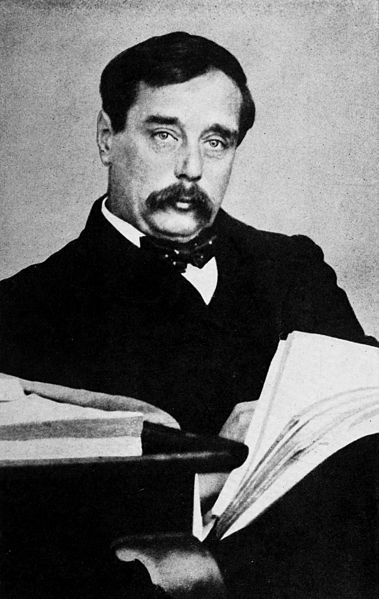H G Wells (Estate)
Books
H G Wells was born in Bromley, Kent in 1866. After working as a draper’s apprentice and pupil-teacher, he won a scholarship to the Normal School of Science, South Kensington, in 1884, studying under T. H. Huxley. He was awarded a first-class honours degree in biology and resumed teaching, but had to retire after a kick from an ill-natured pupil, at football, afflicted his kidneys.
He worked in poverty in London as a crammer while experimenting in journalism and stories, and published textbooks on biology and physiology (1893), but it was THE TIME MACHINE (1895) that launched his literary career. Many scientific romances and short stories began to be paralleled with sociological and political books and tracts, notably ANTICIPATIONS (1901), MANKIND IN THE MAKING (1903) and A MODERN UTOPIA (1905). His full-length, largely autobiographical novels began with LOVE AND MR LEWISHAM (1900), KIPPS (1905), TONO-BUNGAY and ANN VERONICA (1909), the last promoting the outspoken, socially and sexually liberated ‘New Woman’.
He married his cousin Isabel in 1891, but later eloped with, and subsequently married, Catherine Robbins, ‘Jane’. A constant philanderer, he invited scandal by including his lightly concealed private affairs in ANN VERONICA and THE NEW MACHIAVELLI (1911). Shaw and the Webbs had invited him into the Fabian Society and soon regretted it. Wells increasingly used fiction as a platform of ideas and visions of a world-state which preoccupied him, but he foresaw that the Novel itself would decline to be replaced by candid autobiography.
After about 1920, critical attention was turning towards his natural successor Aldous Huxley and the ‘pure’, non-journalistic novels of Joyce and Virginia Woolf. His mass public dwindled, though it welcomed THE OUTLINE OF HISTORY, of that year, and long continued to do so. The Second World War and cataclysm of Hiroshima confirmed the pessimism that had accompanied his exuberant hopes and visions. His last book was titled, with some personal significance, MIND AT THE END OF ITS TETHER (1945), but his vigour continued almost to his death in 1946. In his last two decades he had produced some forty books.

